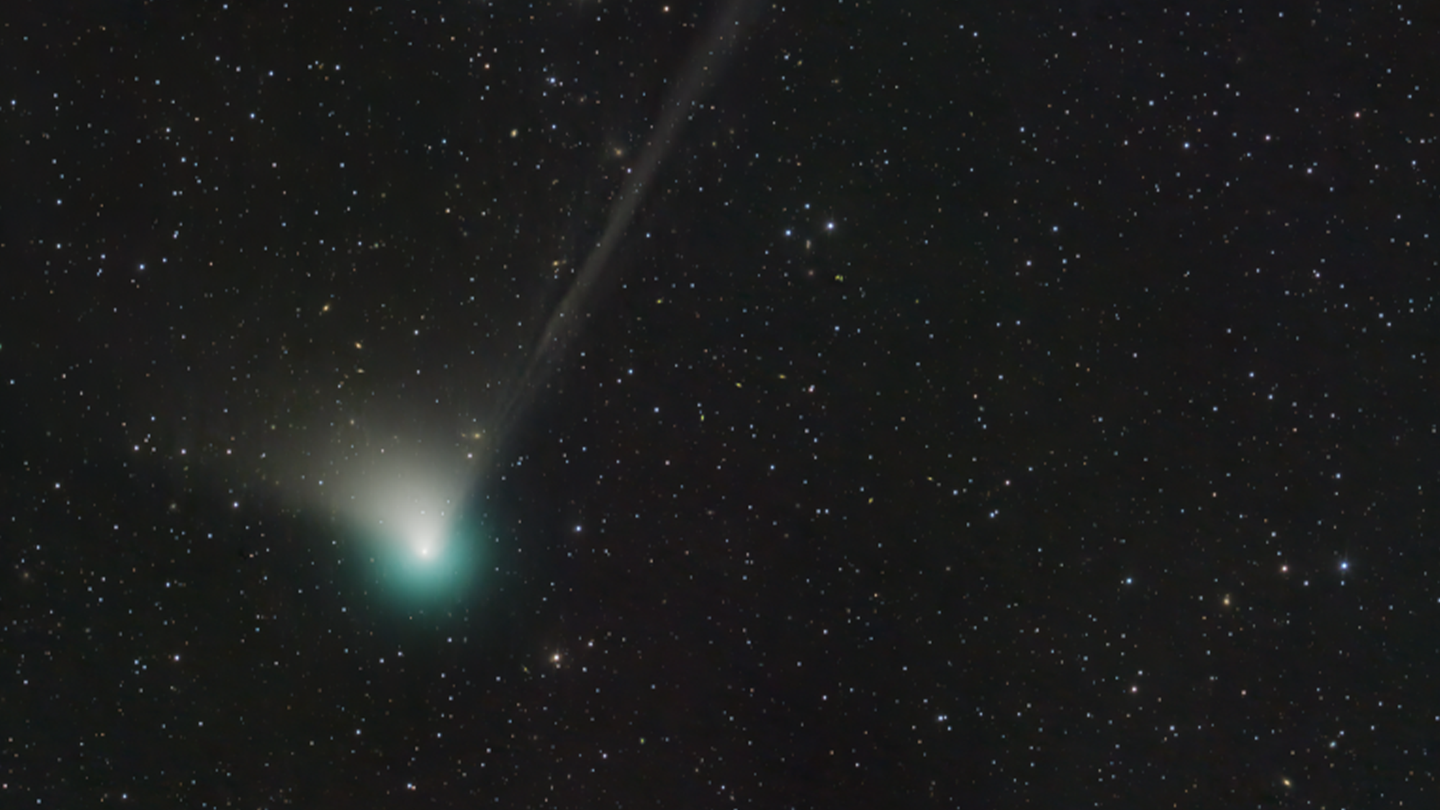
| February 1 and 2, 2023 | Comet C/2022 E3 (ZTF) reaches closes point to Earth |
| February 5, 2023 | Full Snow Moon |
| February 20, 2023 | New Moon |
| February 26, 2023 | NASA’s SpaceX Crew-6 scheduled to launch |
February brings with it weather forecasting rodents, romance, and this year, green comets. The shortest month of the year has a few solid opportunities for looking up at the night sky and catching unique celestial bodies, since it is easier to see in the cold, less-hazy air typical of winter months.
Here are some of the cosmic events to keep your eye on with your Valentine (or groundhog). If you happen to get any stellar sky photos, tag us and include #PopSkyGazers.
[Related: ‘Skyglow’ is rapidly diminishing our nightly views of the stars.]
February 1 and 2 – The ‘Green Comet’ reaches closes point to Earth
Last month, we told you about Comet C/2022 E3 (ZTF), a newly discovered comet that has since made a flurry of headlines. This green-tailed comet has drawn closer to the inner solar system and is approaching its brightest magnitude. It will reach its perigee, or closest point to Earth (within 26 million miles) on February 1 and 2 in the Northern Hemisphere. It might be visible with binoculars, but visibility is not a given. Your best bet is to look northward after sunset.
The comet was discovered in March 2022 by astronomers Frank Masci and Bryce Bolin at the Zwicky Transient Facility (ZTF), a part of the Palomar Observatory in California. Astronomers calculated that it only orbits the sun about every 50,000 years, which means that it was last visible on Earth around the time of the Neanderthals.
February 4 and 5 – Full snow moon
February’s full moon will reach its peak illumination at 1:30 PM EST on February 5. Since it will be below the horizon, the best view of this second full moon of 2023 will best be taken the night before or later on Sunday February 5. The moon will drift above the horizon in the eastern sky around sunset and will reach its highest point around midnight.
The name snow moon is pretty straightforward, as February is known for heavy snowfall. It is also called the Eagle Moon or Migizi-giizis in Anishinaabemowin (Ojibwe), the Hungry Month or Kagali in Cherokee (Eastern Band of Cherokee Indians, North Carolina), and the Midwinter Moon, or Tsha’tekohselha in Oneida.
It is also close to the 52nd anniversary of NASA astronaut Alan Shepard hitting the first golf ball on the moon on February 6, 1971. Fore!
February 20 – New moon
If you prefer new moons to full moons, the new moon will rise at 2:09 AM EST. The new moon occurs when the moon is between the Earth and sun, and the side of the Moon that is in shadow faces Earth.
The moon’s diameter is 2,160 miles, which is less than the width of the US (approximately 3,000 miles), and 0.27 of Earth’s diameter (7,926 miles), according to the Old Farmer’s Almanac.
[Related: What to expect from space exploration in 2023]
February 26 – SpaceX Falcon 9 scheduled to launch of astronauts to International Space Station
If all goes according to plan, SpaceX and NASA will launch Crew-6 from Kennedy Space Center at the end of this month.
NASA astronauts Stephen Bowen and Woody Hoburg, United Arab Emirates astronaut Sultan Al Neyadi, and Roscosmos cosmonaut Andrey Fedyaev will be aboard the launch and are scheduled to spend about six months aboard the International Space Station (ISS). The mission is the sixth contracted astronaut flight that SpaceX flies to the ISS for NASA, but Crew-6 will be the ninth crewed orbital mission for the private space flight company.
As with all launches, this one could be rescheduled and viewing details are still TBD, but can be found here.
The same skygazing rules that apply to pretty much all space-watching activities are key this month: Go to a dark spot away from the lights of a city or town and let the eyes adjust to the darkness for about a half an hour.
The post Here’s what to look for in the night sky this February appeared first on Popular Science.
Articles may contain affiliate links which enable us to share in the revenue of any purchases made.
from Popular Science https://ift.tt/Imlaw6u




0 Comments